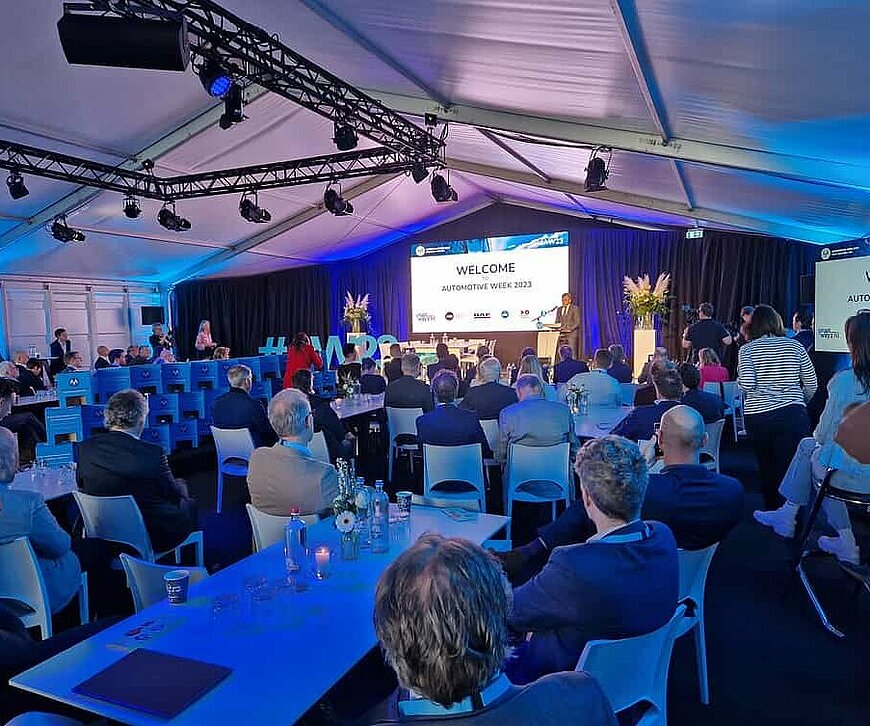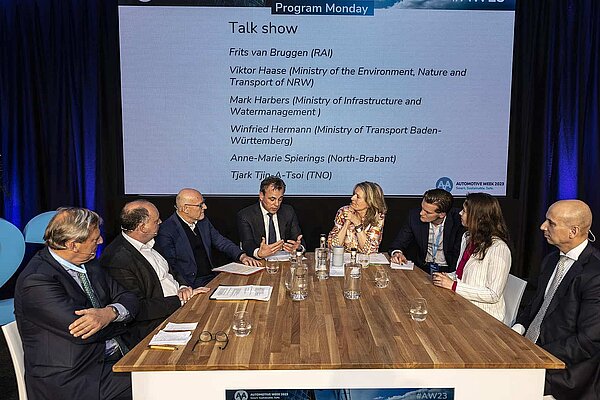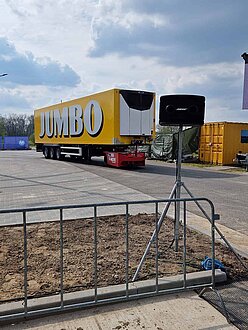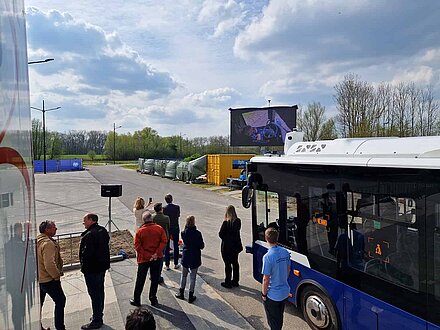Smart, sustainable, and safe – that’s how the future of mobility will look like

Autonomous driving systems, clean fuel solutions, and data traffic platforms are being showcased at the 2023 edition of Automotive Campus Helmond’s Automotive Week.
Smart, sustainable, and safe: these three keywords describe how the mobility of tomorrow will – or should – look like. These same three words are the tagline of 2023’s edition of Automotive Week.
The Automotive Campus Helmond, the Netherlands, officially kicked off its 2023 edition of the Automotive Week. The event, hosted on the campus grounds, started off on April 16 with a career fair. The following day, the grand opening ceremony took place. Until April 19, talks, keynotes, and demos will shed a light on the future of mobility, which revolves around the three ‘s.’
The Dutch government shares these same three pillars, as per the Minister of Infrastructure and Water Management Mark Harbers, who joined the Monday opening session. “Having a densely populated country, we will need highly sophisticated mobility systems,” he said.
3 ‘s’ supported by the national government
The ceremony started – after a quick welcome by the mayor of Helmond Elly Blanksma – with a speech by Minister Harbers, which underlined that “smart, sustainable, and safe are also the key attributes the government envisions the mobility of the future to be like.”
In his speech, he underlined the need for a “highly sophisticated mobility system” to manage movement in and out of Dutch cities and the densely populated suburban areas. Car use was also part of his address, underlining the importance of strengthening infrastructure to accommodate electric mobility. Conscious of the many technological developments in the automotive industry, he stated: “For cars, the best times are yet to come.”
German guests
Shortly after, Harbers was joined on the stage by the Ministers of Transport of the German states Nord-Rhine-Westfalia Viktor Haase and his Baden Württenberg homolog Winfried Hermann for a talk show. Given the closeness of his region with the Netherlands, Haase stressed the importance of cross-border collaboration to establish better mobility models and exchange ideas.
Hermann brought the experience of Baden Württenberg – home to automotive giants such as Mercedes and Porsche – committed to becoming climate neutral by 2040. On the way to this overarching goal, the state set targets in different sectors. “We aim at reducing CO2 emissions by 55 percent by 2030 and to have half of the cars driving our state powered by emission-free fuels,” underlined Winfried Hermann, Minister of Transport of the state. “At the same time, we are working to reduce traffic by 20 percent by improving cycling and walking infrastructure,” he added.

Room for innovation to be tested
Frits van Bruggen, RAI Automotive Industry’s chairman, TNO’s CEO Tjark Tijn-A-Tsoi, and the vice governor of the Provincial Council of North Brabant Anne-Marie Spierings also took part in the talk show. The CEO of TNO – the leading research institute in the Netherlands – remarked how the mobility innovations developed in their labs need to have room and possibilities “to be tested in real-life situations.” Minister Harbers agreed, stressing the need for public procedures to “speed up.” Spierings pointed out the many challenges – shared by all other provinces – to reduce congestion, carbon dioxide, and nitrogen emissions while easing the adoption of electric mobility and thus strengthening the electricity grid. From her perspective, the provincial government can help mobility startups to test their innovations, connecting them with companies.
Van Bruggen urged the creation of infrastructure to make the transition happen, also underlining the importance of hydrogen and synthetic fuels in the shift to more sustainable mobility. Keeping the transition affordable to everyone was another point he raised.
Autonomous vehicles in action
During the whole day, indoor and outdoor demonstrations throughout the Helmond Automotive Campus gave a sneak preview of the future of mobility. Particularly, the outdoor test area of the campus was the space to showcase some autonomous driving demonstrations.
ADASTEC took visitors on a ride on an automated public transport bus. The company’s software allows buses to drive autonomously, recognizing obstacles and stopping when needed. Last year, Michigan State University in the United States started using an autonomously driven bus equipped with ADASTEC technology. The company also conducted trials in Scandinavian countries.
In yard automation, TNO showcased an autonomous tow tug able to move a trailer. During the demo, an operator could make the tow tug move a trailer around the area by triggering his smartphone’s voice assistant.
Glimpse of tomorrow
Visitors could hop on a special car in the adjacent test track – another demo by TNO. The car was equipped with AI-based reasoning intelligence to avoid a pedestrian crossing and a cone on the track autonomously. The vehicle starts by driving in its lane, and then, when blocked by an obstacle, it will plan a new route to avoid it.
Mapping technologies, traffic data management, and a bicycle platoon module were also showcased throughout the campus, displaying smart, sustainable, and safe mobility solutions. Time will tell if and how the three s will reshape mobility.


